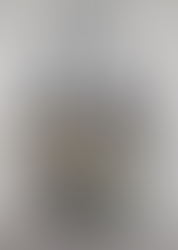Fractaloscopic Images
- Samuel Golc
- Nov 12, 2018
- 2 min read
As an experimental photographer, I like to play with colours and shapes and create images that beguile the eye and capture imagination. To achieve this, I have made a series of optical devices that I can attach to my camera. All these tools are made from household materials and created by hand without the use of any specialist equipment.
Honey Mushrooms

How I shot this image:
Step 1.
I glued pieces of a broken mirror inside a small plastic tube. I call this device a Fractaloscope. The light coming inside the tube is reflected over multiple facets, which creates a fractal-like effect.
Step 2.
I took a spare CD and scratched its surface with a soldering iron.
Step 3.
I photographed the surface of the CD with the Fractaloscope attached to my camera lens.

The Tunnel

How I shot this image:
Step 1.
I cut two spirals out of a cardboard tube.
Step 2.
I glued pieces of a broken glass inside one spiral and fragments of a CD on the other.
Step 3.
I put the two spirals together so that they formed the original tube shape.
Step 4.
I shot a long-exposure photograph through the Fractaloscpe while I turned it clockwise.
Step 5.
I edited the image and turned it black and white.

Portal

How I shot this image:
Step 1.
I made a triangular Fractaloscope using pieces of broken mirror and a sheet of cork.
Step 2.
I gathered CD pieces and some other materials and then photographed them through the Fractaloscope.

Quantum Tree

How I shot this image:
Step 1.
I attached three lenses extracted from magnifying glasses to a cardboard hood. I positioned the lenses so that they overlap and distort the image.
Step 2.
I attached the hood to a metal tube and inserted a simple Fractaloscope (such as the one I used to capture the first image)
Step 3.
I took a picture through the Fractaloscope and then adjusted it with a photo editing software.


























Comments